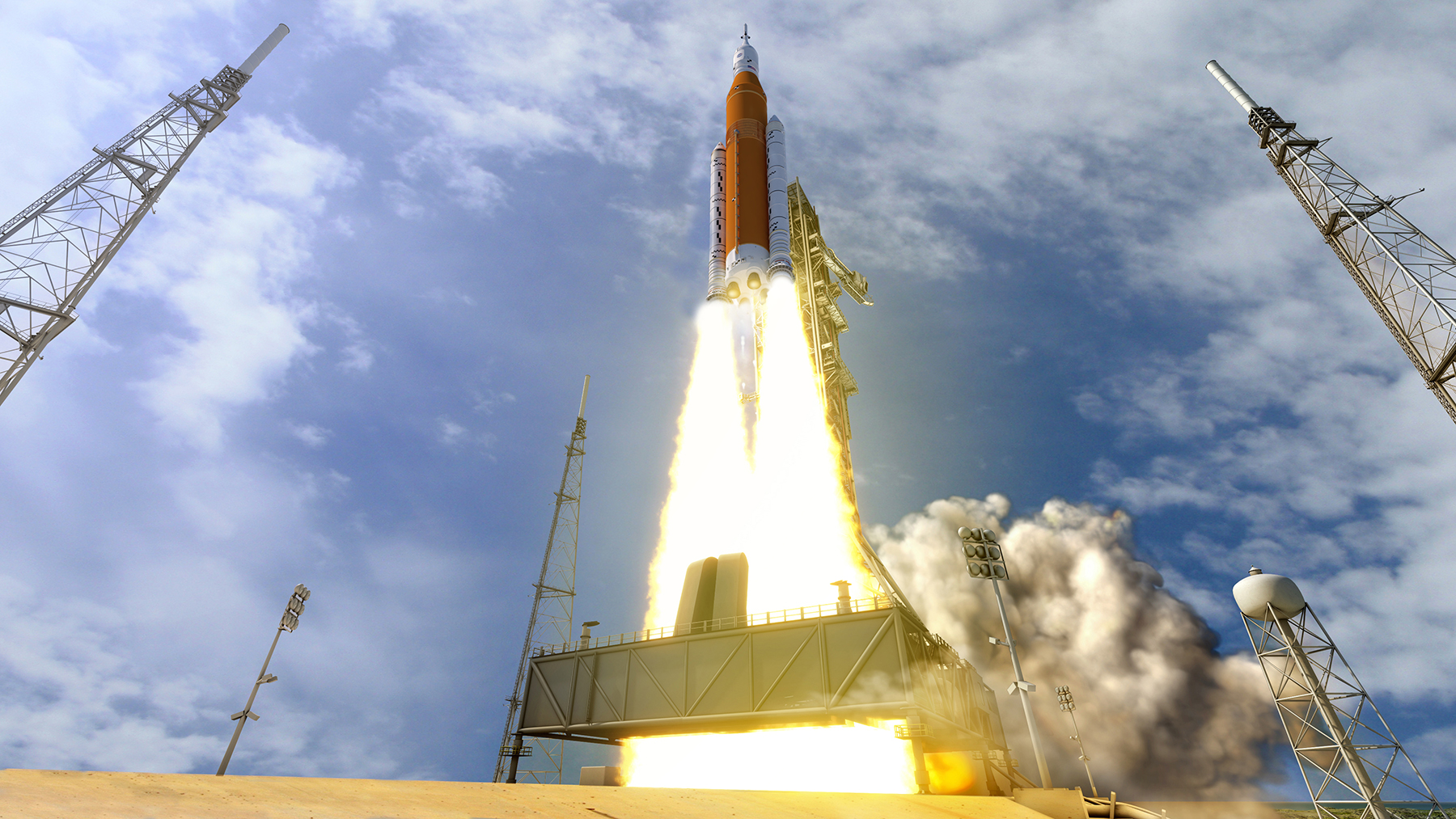In this series we are exploring the weird and wonderful world of astronomy jargon! You’ll finally get away with today’s topic: escape velocity!
Continue reading “Astronomy Jargon 101: Escape Velocity”The Challenges of an Alien Spaceflight Program: Escaping Super Earths and Red Dwarf Stars
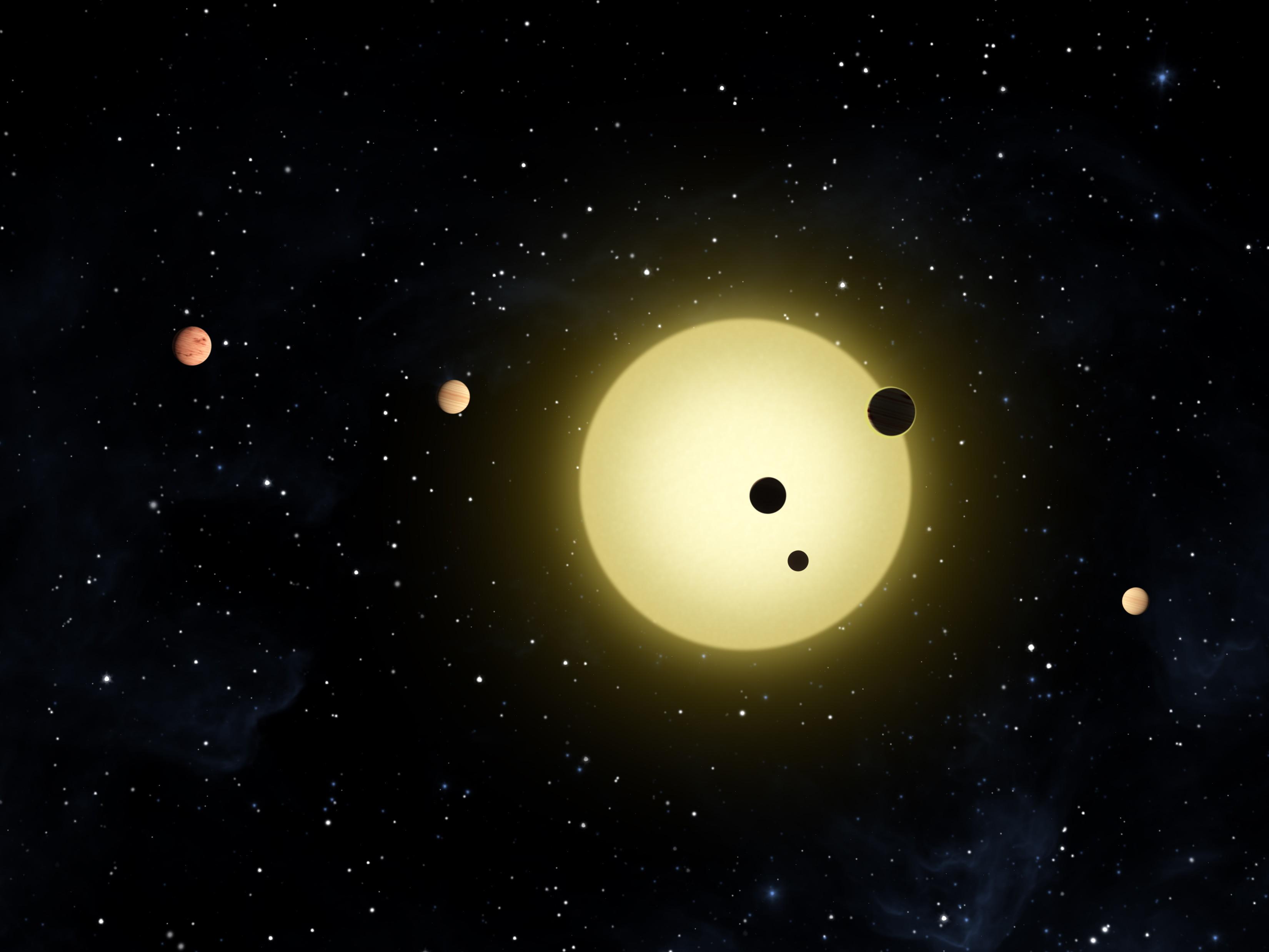
Since the beginning of the Space Age, humans have relied on chemical rockets to get into space. While this method is certainly effective, it is also very expensive and requires a considerable amount of resources. As we look to more efficient means of getting out into space, one has to wonder if similarly-advanced species on other planets (where conditions would be different) would rely on similar methods.
Harvard Professor Abraham Loeb and Michael Hippke, an independent researcher affiliated with the Sonneberg Observatory, both addressed this question in two recently–released papers. Whereas Prof. Loeb looks at the challenges extra-terrestrials would face launching rockets from Proxima b, Hippke considers whether aliens living on a Super-Earth would be able to get into space.
The papers, tiled “Interstellar Escape from Proxima b is Barely Possible with Chemical Rockets” and “Spaceflight from Super-Earths is difficult” recently appeared online, and were authored by Prof. Loeb and Hippke, respectively. Whereas Loeb addresses the challenges of chemical rockets escaping Proxima b, Hippke considers whether or not the same rockets would able to achieve escape velocity at all.

For the sake of his study, Loeb considered how we humans are fortunate enough to live on a planet that is well-suited for space launches. Essentially, if a rocket is to escape from the Earth’s surface and reach space, it needs to achieve an escape velocity of 11.186 km/s (40,270 km/h; 25,020 mph). Similarly, the escape velocity needed to get away from the location of the Earth around the Sun is about 42 km/s (151,200 km/h; 93,951 mph).
As Prof. Loeb told Universe Today via email:
“Chemical propulsion requires a fuel mass that grows exponentially with terminal speed. By a fortunate coincidence the escape speed from the orbit of the Earth around the Sun is at the limit of attainable speed by chemical rockets. But the habitable zone around fainter stars is closer in, making it much more challenging for chemical rockets to escape from the deeper gravitational pit there.”
As Loeb indicates in his essay, the escape speed scales as the square root of the stellar mass over the distance from the star, which implies that the escape speed from the habitable zone scales inversely with stellar mass to the power of one quarter. For planets like Earth, orbiting within the habitable zone of a G-type (yellow dwarf) star like our Sun, this works out quite while.

Unfortunately, this does not work well for terrestrial planets that orbit lower-mass M-type (red dwarf) stars. These stars are the most common type in the Universe, accounting for 75% of stars in the Milky Way Galaxy alone. In addition, recent exoplanet surveys have discovered a plethora of rocky planets orbiting red dwarf stars systems, with some scientists venturing that they are the most likely place to find potentially-habitable rocky planets.
Using the nearest star to our own as an example (Proxima Centauri), Loeb explains how a rocket using chemical propellant would have a much harder time achieving escape velocity from a planet located within it’s habitable zone.
“The nearest star to the Sun, Proxima Centauri, is an example for a faint star with only 12% of the mass of the Sun,” he said. “A couple of years ago, it was discovered that this star has an Earth-size planet, Proxima b, in its habitable zone, which is 20 times closer than the separation of the Earth from the Sun. At that location, the escape speed is 50% larger than from the orbit of the Earth around the Sun. A civilization on Proxima b will find it difficult to escape from their location to interstellar space with chemical rockets.”
Hippke’s paper, on the other hand, begins by considering that Earth may in fact not be the most habitable type of planet in our Universe. For instance, planets that are more massive than Earth would have higher surface gravity, which means they would be able to hold onto a thicker atmosphere, which would provide greater shielding against harmful cosmic rays and solar radiation.
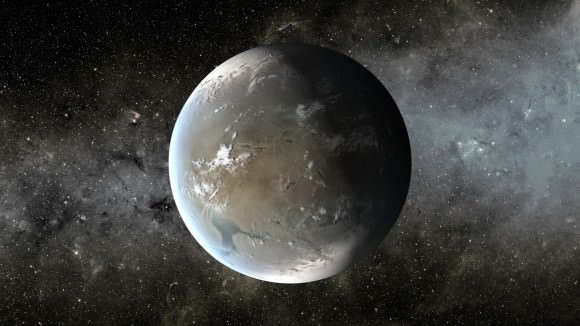
In addition, a planet with higher gravity would have a flatter topography, resulting in archipelagos instead of continents and shallower oceans – an ideal situation where biodiversity is concerned. However, when it comes to rocket launches, increased surface gravity would also mean a higher escape velocity. As Hippke indicated in his study:
“Rockets suffer from the Tsiolkovsky (1903) equation : if a rocket carries its own fuel, the ratio of total rocket mass versus final velocity is an exponential function, making high speeds (or heavy payloads) increasingly expensive.”
For comparison, Hippke uses Kepler-20 b, a Super-Earth located 950 light years away that is 1.6 times Earth’s radius and 9.7 times it mass. Whereas escape velocity from Earth is roughly 11 km/s, a rocket attempting to leave a Super-Earth similar to Kepler-20 b would need to achieve an escape velocity of ~27.1 km/s. As a result, a single-stage rocket on Kepler-20 b would have to burn 104 times as much fuel as a rocket on Earth to get into orbit.
To put it into perspective, Hippke considers specific payloads being launched from Earth. “To lift a more useful payload of 6.2 t as required for the James Webb Space Telescope on Kepler-20 b, the fuel mass would increase to 55,000 t, about the mass of the largest ocean battleships,” he writes. “For a classical Apollo moon mission (45 t), the rocket would need to be considerably larger, ~400,000 t.”

While Hippke’s analysis concludes that chemical rockets would still allow for escape velocities on Super-Earths up to 10 Earth masses, the amount of propellant needed makes this method impractical. As Hippke pointed out, this could have a serious effect on an alien civilization’s development.
“I am surprised to see how close we as humans are to end up on a planet which is still reasonably lightweight to conduct space flight,” he said. “Other civilizations, if they exist, might not be as lucky. On more massive planets, space flight would be exponentially more expensive. Such civilizations would not have satellite TV, a moon mission, or a Hubble Space Telescope. This should alter their way of development in certain ways we can now analyze in more detail.”
Both of these papers present some clear implications when it comes to the search for extra-terrestrial intelligence (SETI). For starters, it means that civilizations on planets that orbit red dwarf stars or Super-Earths are less likely to be space-faring, which would make detecting them more difficult. It also indicates that when it comes to the kinds of propulsion humanity is familiar with, we may be in the minority.
“This above results imply that chemical propulsion has a limited utility, so it would make sense to search for signals associated with lightsails or nuclear engines, especially near dwarf stars,” said Loeb. “But there are also interesting implications for the future of our own civilization.”
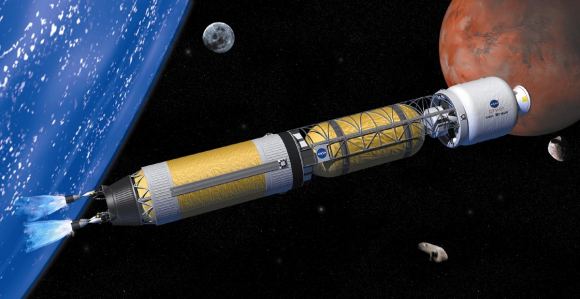
“One consequence of the paper is for space colonization and SETI,” added Hippke. “Civs from Super-Earths are much less likely to explore the stars. Instead, they would be (to some extent) “arrested” on their home planet, and e.g. make more use of lasers or radio telescopes for interstellar communication instead of sending probes or spaceships.”
However, both Loeb and Hippke also note that extra-terrestrial civilizations could address these challenges by adopting other methods of propulsion. In the end, chemical propulsion may be something that few technologically-advanced species would adopt because it is simply not practical for them. As Loeb explained:
“An advanced extraterrestrial civilization could use other propulsion methods, such as nuclear engines or lightsails which are not constrained by the same limitations as chemical propulsion and can reach speeds as high as a tenth of the speed of light. Our civilization is currently developing these alternative propulsion technologies but these efforts are still at their infancy.”
One such example is Breakthrough Starshot, which is currently being developed by the Breakthrough Prize Foundation (of which Loeb is the chair of the Advisory Committee). This initiative aims to use a laser-driven lightsail to accelerate a nanocraft up to speeds of 20% the speed of light, which will allow it to travel to Proxima Centauri in just 20 years time.
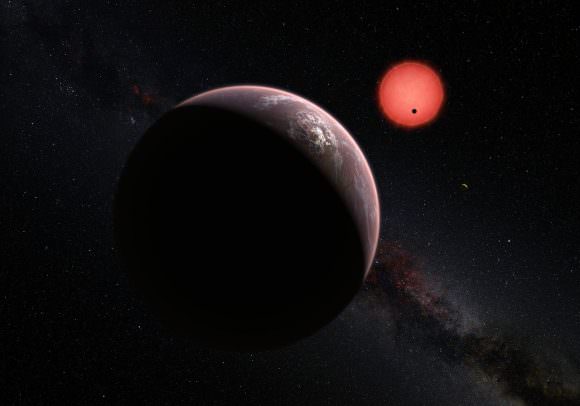
Hippke similarly considers nuclear rockets as a viable possibility, since increased surface gravity would also mean that space elevators would be impractical. Loeb also indicated that the limitations imposed by planets around low mass stars could have repercussions for when humans try to colonize the known Universe:
“When the sun will heat up enough to boil all water off the face of the Earth, we could relocate to a new home by then. Some of the most desirable destinations would be systems of multiple planets around low mass stars, such as the nearby dwarf star TRAPPIST-1 which weighs 9% of a solar mass and hosts seven Earth-size planets. Once we get to the habitable zone of TRAPPIST-1, however, there would be no rush to escape. Such stars burn hydrogen so slowly that they could keep us warm for ten trillion years, about a thousand times longer than the lifetime of the sun.”
But in the meantime, we can rest easy in the knowledge that we live on a habitable planet around a yellow dwarf star, which affords us not only life, but the ability to get out into space and explore. As always, when it comes to searching for signs of extra-terrestrial life in our Universe, we humans are forced to take the “low hanging fruit approach”.
Basically, the only planet we know of that supports life is Earth, and the only means of space exploration we know how to look for are the ones we ourselves have tried and tested. As a result, we are somewhat limited when it comes to looking for biosignatures (i.e. planets with liquid water, oxygen and nitrogen atmospheres, etc.) or technosignatures (i.e. radio transmissions, chemical rockets, etc.).
As our understanding of what conditions life can emerge under increases, and our own technology advances, we’ll have more to be on the lookout for. And hopefully, despite the additional challenges it may be facing, extra-terrestrial life will be looking for us!
Professor Loeb’s essay was also recently published in Scientific American.
Further Reading: arXiv, arXiv (2), Scientific American
Astronomy Cast Ep. 384: Escaping Probes
The gravity of the Earth is a tough thing to escape, but breaking free from the gravity of the Sun is on a whole other level. But humans have achieved this amazing accomplishment, and right now there are several spacecraft leaving the Solar System and never coming back.
How Can Black Holes Shine?
We hear that black holes absorb all the light that falls into them. And yet, we hear of black holes shining so brightly we can see them halfway across the Universe. What’s going on? Which is it?
I remember back to a classic episode of the Guide to Space, where I provided an extremely fascinating and concise explanation for what a quasar is. Don’t recall that episode? Well, it was super. Just super. Alright slackers, let’s recap.
Quasars are the brightest objects in the Universe, visible across billions of light years. Likely blanching life from everything in the path of the radiation beam from its lighthouse of death. They occur when a supermassive black hole is actively feeding on material, pouring out a mountain of radiation. Black holes, of course, are regions of space with such intense gravity where nothing, not even light itself, can escape.
But wait, not so fast “recap” Fraser Cain. I call shenanigans. If black holes absorb all the radiation that falls into them, how can they be bright?
You, Fraser Cain of days of yore, cannot have it both ways. It’s either a vortex of total destruction gobbling all the matter and light that fall into them OR alternately light can escape, which still sounds good. I mean, it could be WHERE NO STUFF CAN ESCAPE, except light.
If you’ll admit that you of the past was wrong, we’ll put you in the temporal cone of shame and move on with the episode. Right? Right? Wrong.
Let’s review. Black holes are freaky complicated beasts, with many layers. And I don’t mean that in some abstract Choprian “many connections on many different levels”. They’re a gobstopper from a Sam Neill Event Horizon style hellscape. Let’s take a look at the anatomy of a black hole, and everything should fall into place, including the terror.
At the very heart of the black hole is the singularity. This is the region of compressed matter that used to be a star, or in the case of a supermassive black hole, millions or billions of times the mass of a star. Astronomers have no idea what the singularity looks like or behaves, because our understanding of physics completely breaks down, along with the rest of our brains.

It’s possible that the singularity is a sphere of exotic matter, or maybe it’s constantly compressing down into an infinitely small size. It could also be a pork pie. We’ll never know, because nothing goes fast enough to escape from a black hole, not even light.
Maybe you’d need to be going 10 times the speed of light to escape. Or maybe a trillion times the speed of light. Which makes it easy; as far as we can tell, nothing can go faster than the speed of light, and so nothing is escaping.
As you get further from the singularity, the force of gravity decreases. Initially, it’ll still requires that you go faster than light. You’ll finally reach a very specific point where the escape velocity is exactly the speed of light. This is the event horizon, and it’s a different distance from the singularity with every black hole. That’s the line. Within the event horizon, the light is doomed, outside the event horizon, it can escape. This is the hard candy shell surrounding the chocolately unimaginable nightmare of physics.
So when see bright black holes, like a quasar, we’re not actually seeing light coming from inside the black hole itself or reflected of its surface. What we’re seeing is the material that’s piling up just outside the event horizon. For all its voracious hunger, a black hole’s gravitational eyes are much bigger than its stomach, and it can only feed so quickly. Excess stuff piles up around the black hole’s face and forms a vast disk of material, just like me at a Pizza Hut’s $5 all you can eat buffet. This pizza heats up until it’s like the core of a star, and starts blasting out radiation into space.
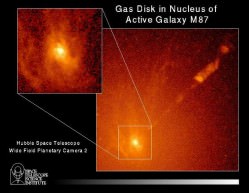
Everything I’ve said is for non-spinning black holes, by the way. Physicists will always make this point with great emphasis. Stay your angry comments astrophysicists, for I have said the magic stone-cutter appeasement code-word, “Non-rotating”.
Of course, black holes do rotate, and can rotate at nearly the speed of light. And this rotation changes the nature of the black hole’s event horizon in ways that make difficult math even harder. All this spinning generates powerful magnetic fields around the black hole, which focuses jets of material that blast out for hundreds of thousands of light-years. When we see these bright quasars, we’re staring right at these jets with our delicate little eyeballs.
So how can we see light coming from black holes when black holes absorb all light? It’s not coming from black holes. It’s coming from the super-heated region of junk all around the black hole. And still, anything that falls through the event horizon, whether it be light, junk, you, me or Grumpy Cat it will never been seen again.
What’s your favorite sci-fi black hole? Tell us in the comments below.
Thanks for watching! Never miss an episode by clicking subscribe. Our Patreon community is the reason these shows happen. We’d like to thank Marcel-jan Krijgsman and the rest of the members who support us in making great space and astronomy content. Members get advance access to episodes, extras, contests, and other shenanigans with Jay, myself and the rest of the team. Want to get in on the action? Click here.
Why Doesn’t The Sun Steal The Moon?

The Sun has so much more mass than the Earth. So, so, so much more mass. Almost everything in the Solar System is orbiting the Sun, and yet, the Moon refuses to leave our side. What gives?
The Sun contains 99.8% of the entire mass of the Solar System. It looks to us like everything seems to orbit the Sun, so why doesn’t the Sun capture the Moon from Earth like a schoolyard bully snatching the Earth’s lunch money. That would make sense right? It all fits in with our skewed view of social hierarchy based on an entities volume.
Good news! It’s already happened, In a way. The Sun has already captured the Moon. If you look at the orbit of the Moon, it orbits the Sun similar to the way Earth does. Normally the motion of the Moon around the Sun is drawn as a kind of Spirograph pattern, but its actual motion is basically the same orbit as Earth with a small wobble to it.
The Moon also orbits the Earth. You might think this is because the Earth is much closer to the Moon than the Sun. After all, the strength of gravity depends not only on the mass of an object, but also on its distance from you. But this isn’t the case. The Sun is about 400 times more distant from the Moon than the Earth, but the Sun is about 330,000 times more massive.
If you’re up for some napkin calculations, you little mathlete, by using Newton’s law of gravity, you find that even with its greater distance, the Sun pulls on the Moon about twice as hard as the Earth does.
So why can’t the Moon escape the Earth?
In order to escape the gravitational pull of a body, you need to be moving fast enough *relative to that body* to escape its pull. This is known as the escape velocity of the object.
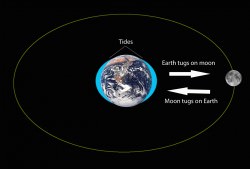
So, yes, the Sun is totally trying to rip the Moon away from the Earth, but the Earth is super clingy.
The speed of the Moon around the Earth is about 1 km/s. At the Moon’s distance from the Earth, the escape velocity is about 1.2 km/s. The Moon simply isn’t moving fast enough to escape the Earth.
Man, those numbers sure are close. I wonder if we could kickstart a rocket to stick on the side? So, even though the Moon can’t escape the Earth, it is gradually moving away. This is due to the tidal interactions between the Earth and Moon, which we talk about another video we’ll link at the end of this one.
So even though the Moon will never escape the Earth, it will continue to move away. So, what do you think? What kind of devious project should we start to get the Moon that little boost so it finally escapes the clingy Earth and all its clingy Klingon clingyness? Tell us in the comments below.
And if you like what you see, come check out our Patreon page and find out how you can get these videos early while helping us bring you more great content!

